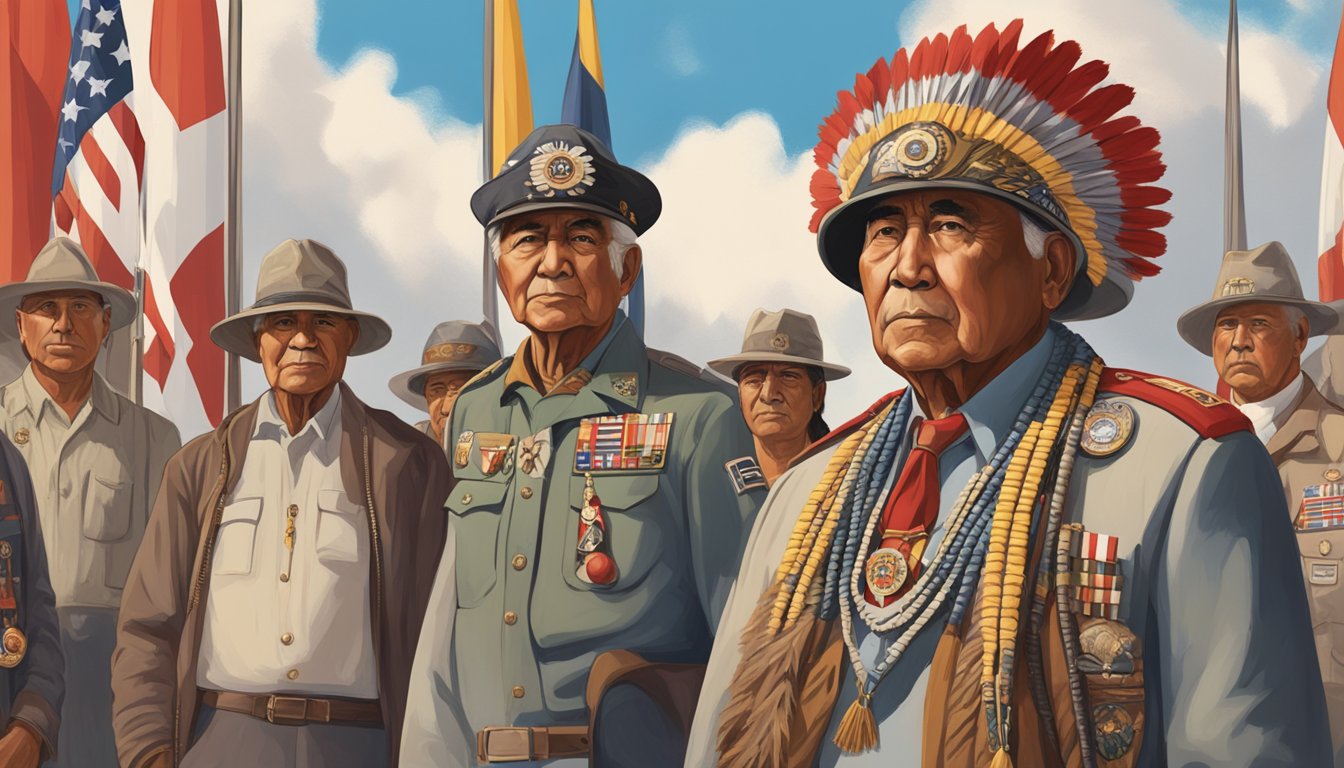Recognition of Indigenous Veterans
A pivotal chapter in the recognition of Indigenous veterans from World War I is currently being written, with significant emphasis on figures such as Otis W. Leader, a distinguished Choctaw code talker.
Now, more than a century after their service, these veterans are being reconsidered for the Medal of Honor.
Tewanna Anderson-Edwards, Leader’s great-niece, shared her heartfelt appreciation for his legacy, noting the pride his story elicits in their family.
As a corporal in the 16th Infantry Regiment of the 1st Infantry Division, Leader displayed extraordinary courage throughout the war.
He is particularly remembered for his lone assault on an enemy machine gun position, which came after his unit faced significant losses.
During this daring act, he captured two machine guns while bravely confronting 18 enemy soldiers.
For his remarkable valor, Leader received multiple honors, including the Purple Heart, Silver Star Medal, Victory Medal, and the French Croix de Guerre with Palm.
General John J. Pershing recognized him as one of the finest soldiers of the war.
The Valor Medals Review Act
Despite his achievements, Anderson-Edwards believes that Leader, along with other Indigenous code talkers, has not yet been fully acknowledged for their sacrifices and contributions.
She emphasized the potentially life-saving impact these warriors had during the conflict, arguing that their actions deserve greater recognition.
Presently, the review for Leader and roughly 12,000 Native Americans who served in World War I is part of the World War I Valor Medals Review Act.
Enacted alongside the 2018 National Defense Authorization Act, this legislation seeks to reassess the heroic actions of racial and ethnic minority veterans, aiming to identify instances where their valor was overlooked due to the societal prejudices of their era.
To qualify for the Medal of Honor, veterans must have previously received the Distinguished Service Cross, Navy Cross, or the French Croix de Guerre with Palm, or have been nominated for the Medal of Honor itself.
Following this, the Army and Navy will review the individuals’ service records.
Preserving the Legacy
The Pentagon is collaborating with the Valor Medals Review Task Force—a joint initiative that includes the World War I Centennial Commission and the George S. Robb Centre for the Study of the Great War at Park University. Dr. Timothy Westcott, director of the Robb Centre, became involved upon discovering the overlooked wartime contributions of several veterans.
One such veteran is Sgt. William A. Butler, who was nominated for the Medal of Honor but ultimately did not receive it.
George S. Robb was also nominated for the Medal of Honor in September 1918.
While Robb received the medal, Butler was awarded the Distinguished Service Cross. Dr. Westcott and his team have identified 214 individuals from World War I eligible for the Medal of Honor, 24 of whom are Indigenous veterans.
Westcott noted that they have submitted 56 nominations, which require extensive documentation that takes six to nine months to prepare due to the meticulous nature of the process.
Out of these, 49 nominations were sent to the Army and seven to the Navy.
However, the timeline for approvals remains uncertain, with limited communication from military services.
Before its dissolution, the Centennial Commission worked with the Sequoyah National Research Center to create a database that records Indigenous personnel who served in World War I. Erin Fehr, the assistant director at Sequoyah, explained that this initiative stemmed from public exhibitions showcasing the contributions of code talkers during the war, highlighting a significant gap in awareness regarding Indigenous service members.
Fehr underscored the importance of preserving this history, as many Indigenous individuals actively contributed to the war effort despite the trauma inflicted by the American Indian boarding school system, which aimed to erase their languages and cultures.
There’s a poignant irony in the fact that these veterans used their suppressed languages as crucial tools for communication in warfare.
The U.S. military’s strategy for Indigenous recruits prior to World War I was multifaceted, influenced by the assimilation policies of boarding schools.
Ultimately, these service members were integrated into standard military ranks, challenging the segregation that might have been anticipated.
For Anderson-Edwards, the memory of her great uncle is filled with warmth.
She fondly recalls his inviting nature, likening him to a cheerful figure akin to Santa Claus.
With hope, she wishes for her great uncle’s bravery to be officially honored, representing a larger narrative of resilience and remembrance within the Indigenous community.
Anderson-Edwards emphasizes a balance between respecting the past and looking ahead, ensuring that these vital stories of sacrifice and courage are not forgotten.
Source: Militarytimes

